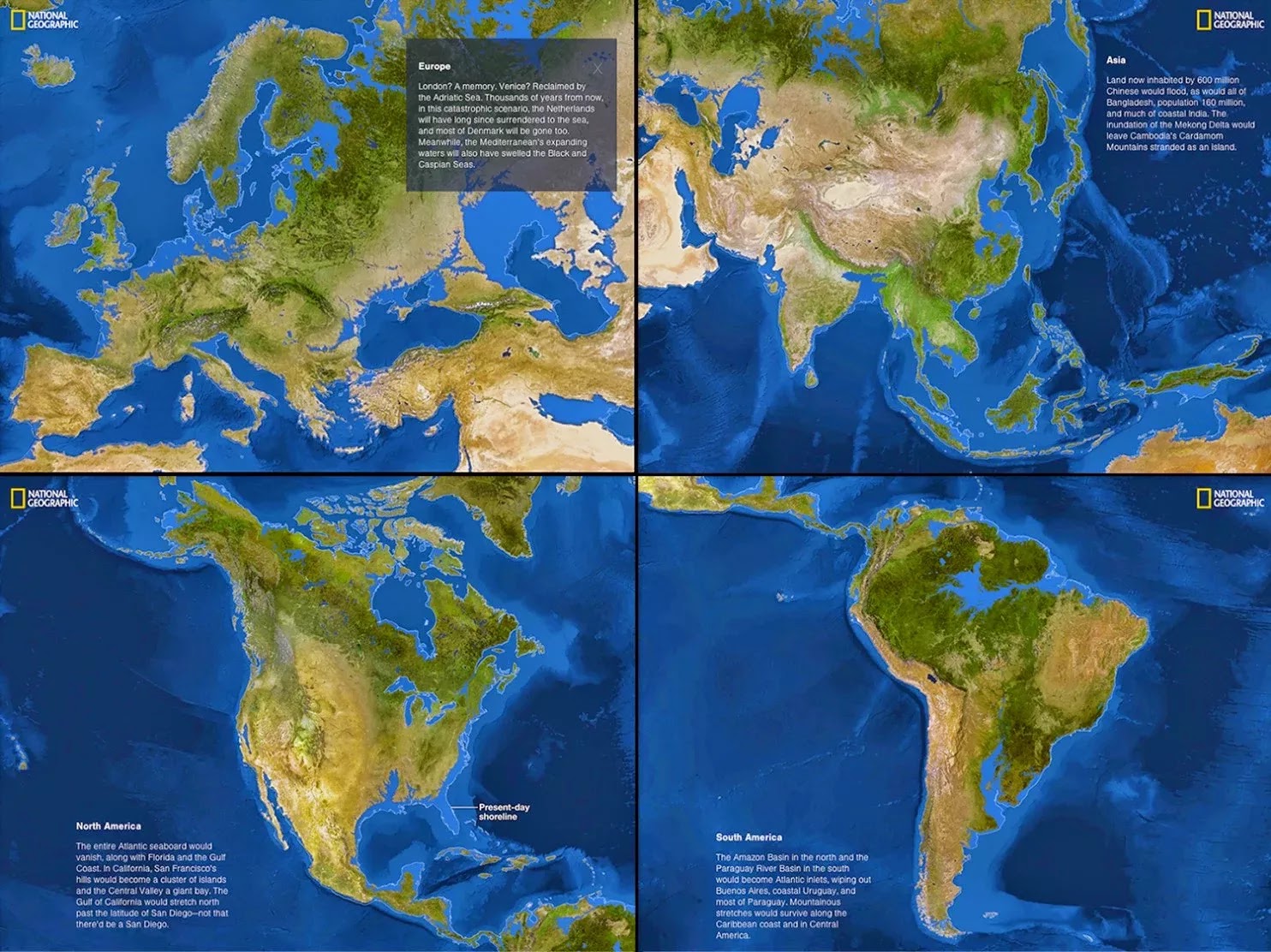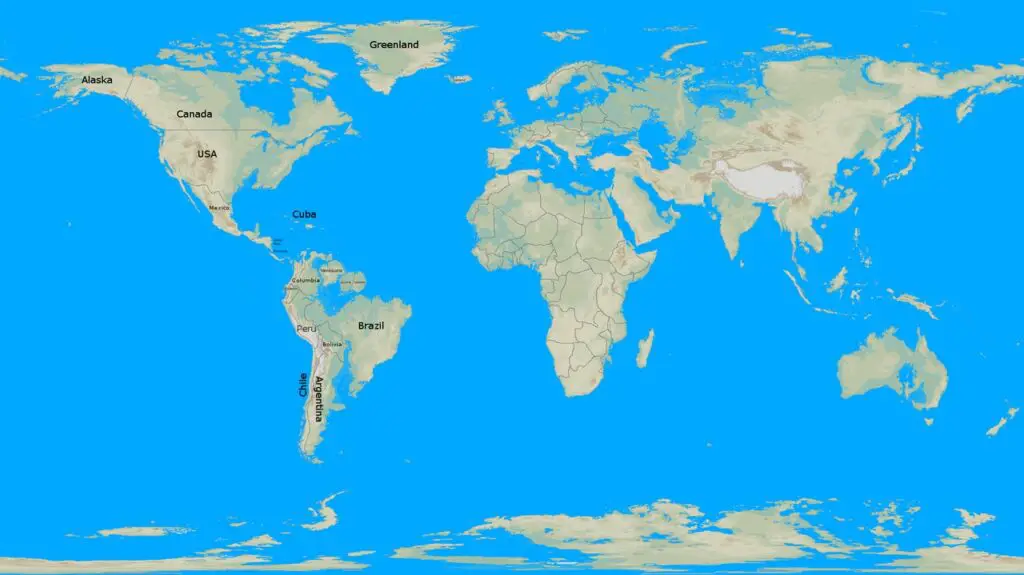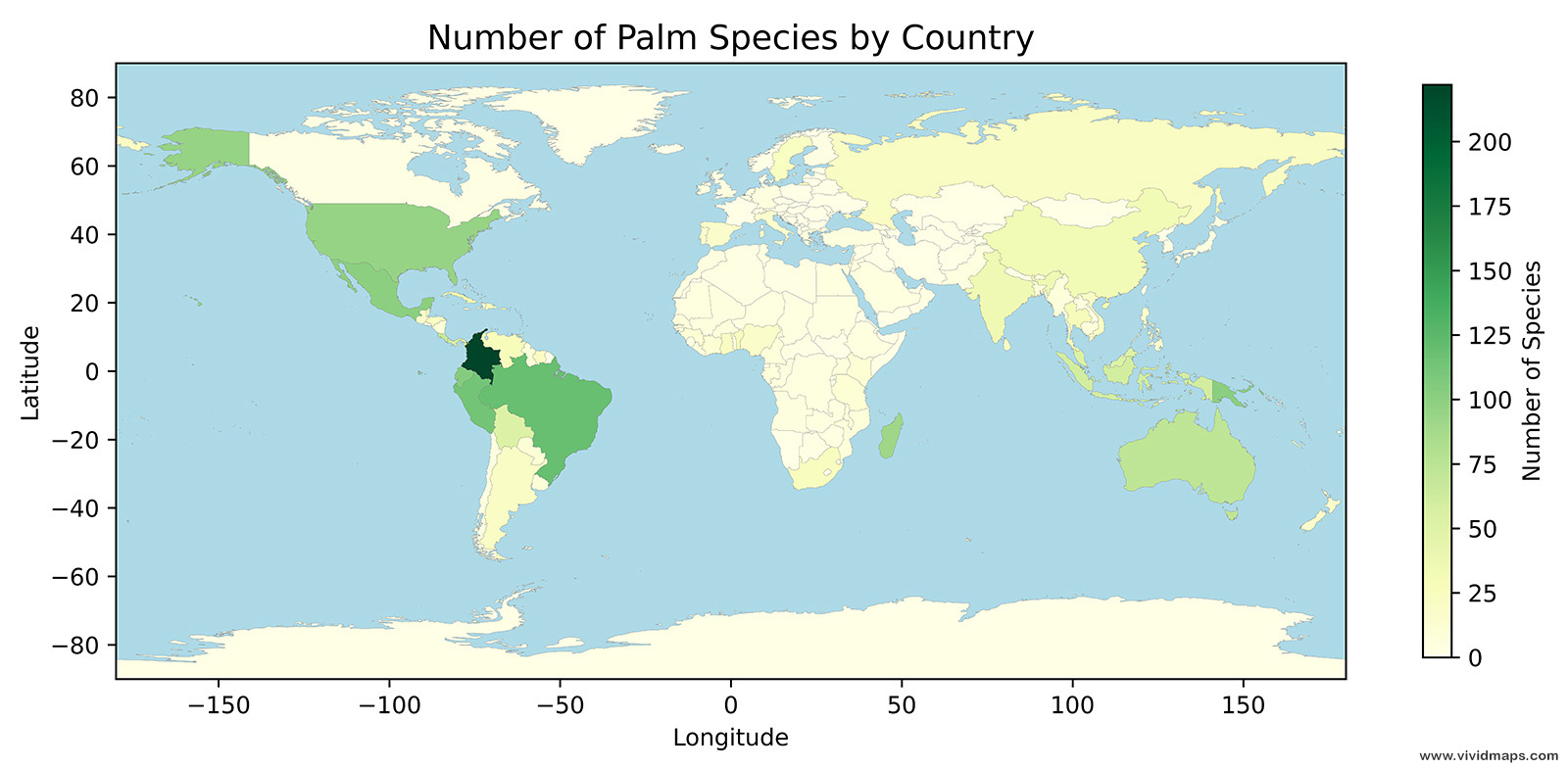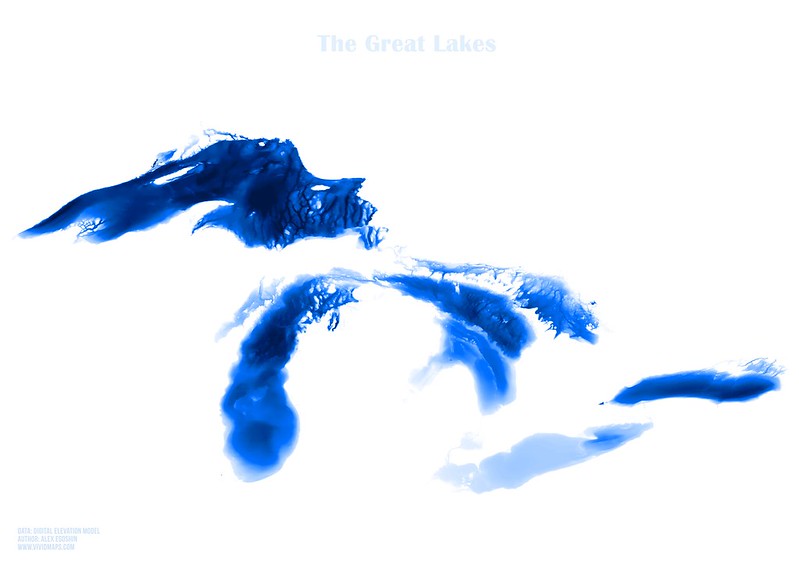If the polar ice caps completely melted
According to the U.S. Environmental Protection Agency, the sea level has increased 15 to 20 cm (6 to 8 inches) in the latest 100 years. The process of raising the water level of the world’s oceans continues.
If all the ice covering Antarctica, Greenland, and mountain glaciers worldwide were to melt, the sea level would rise about 70 meters (230 feet). The ocean would cover all the coastal cities. The number of people affected by this is about 40% of the world population because they’re within 250 feet of high tide.
The main ice-covered landmass is Antarctica, with about 90% of the globe’s ice (and 70 % of its fresh water). Antarctica has surfaced with ice an average of 2,133 m (7,000 ft) thick. Fortunately, the average temperature in Antarctica is about -37°C, and it is unlikely that this mass of ice will melt anytime soon.
Nevertheless, National Geographic decided to demonstrate what our planet would look like if all the ice on the Earth suddenly melted.

- Venice would be reclaimed by the Adriatic Sea. 1000 years from now, in this catastrophic scenario, the Netherlands will have long since surrendered to the sea, and most of Denmark will be gone too. Mediterranean sea will have swelled the Black and Caspian Seas.
- In North America, Florida and the Gulf Coast would vanish. San Francisco would become a cluster of islands.
- In South America Amazon and Paraguay Rivers would become Atlantic inlets, wiping out Buenos Aires, and most of Paraguay and coastal Uruguay. Africa would lose less of its land to the ultimate sea-level catastrophe
- In Asia land inhabited by 0,6 billion Chinese would flood, as would all of Bangladesh, population 160 million, and much of coastal India.
A simplified map of the effects of rising ocean levels would look as follows.

One other exciting impact is if melt the ice melt, that will change the Earth’s rotation. It may increase how long a day is. The polar ice caps are close to the planet’s axis of rotation. If this ice would melt, water will go around the Earth, further away from the axis of rotation. So our planet is going to rotate at a slower speed. It isn’t easy to calculate, but presumably about 20 seconds longer for a day.
According to NASA, if the only Greenland ice sheet would completely melt, the meltwater would to ultimately flow into the oceans, and the global sea level would rise by about 7 m (23 f). The length of the day becomes longer than it is today, by about two milliseconds.









I bricked to this. Thank you.
WHAT
Do people read first what they are posting ? This comment makes no sense
this is what the ocean would look like if I released 7 billion gallons of “protein” into it
Yea… though the oceans might have a more milky color to them.
I’m am prone to massive sea rising and can not drown